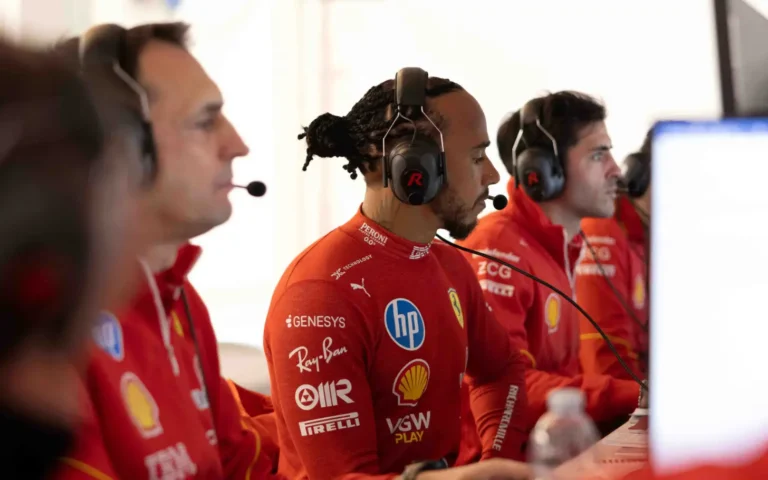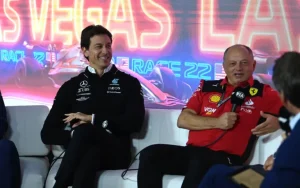Just in:Ferrari Identifies Potential Cause of Lewis Hamilton’s Testing Crash; as a result of…read more

Ferrari Identifies Potential Cause of Lewis Hamilton’s Testing Crash; as a result of…read more
Lewis Hamilton’s crash during his second day of Ferrari testing has raised several questions about the cause of the incident. Fortunately, Hamilton emerged unscathed, but the crash disrupted his preparations for his debut season with Ferrari, limiting his track time at a crucial stage in the lead-up to the new season.
Ferrari has downplayed the severity of the crash, explaining that Hamilton was simply testing the limits of the SF-23, a Ferrari model from two years ago. The team emphasized that such accidents are not unusual during testing, particularly when drivers are pushing the car to assess its full potential. Before the Barcelona test, Hamilton had been more cautious in his driving during the Fiorano run, but the test at Barcelona provided him with the opportunity to push harder. At the time of the crash, Hamilton was behind the wheel of the SF-23 when he collided with the barriers, resulting in significant damage, particularly to the car’s front suspension and some aerodynamic components. Consequently, the car required several hours of repairs before it could return to the track.
During testing, Hamilton shared duties with his new teammate Charles Leclerc. Leclerc was scheduled to take over in the afternoon session, but Hamilton’s crash delayed these plans, affecting Leclerc’s ability to get his allotted track time.
Although Ferrari has not directly blamed Hamilton for the crash, the circumstances surrounding the incident suggest that there might have been more factors at play than just driver error. The crash occurred in the final sector of the Circuit de Barcelona-Catalunya, a section of the track that has undergone significant modifications recently. The traditional chicane in this section has been replaced by a high-speed double right-hand turn, which presents a different challenge for drivers compared to the previous layout. According to reports from AutoRacer, the accident was likely caused by a bump in the circuit that may have unsettled Hamilton’s car, causing him to lose control and crash into the barriers.
These changes to the track layout could have played a significant role in the crash. The removal of the chicane and the introduction of faster, more demanding right-hand turns presents a different kind of challenge for drivers, requiring more precise handling at higher speeds. The bump in the road, as reported by AutoRacer, might have disrupted the car’s balance, especially since Hamilton was pushing the car to its limits in this section. While it’s clear that Hamilton was testing the limits of the SF-23, it’s also possible that the new track features contributed to the incident.
The crash serves as a reminder of the risks inherent in pre-season testing. During this period, drivers typically push their vehicles to the maximum to gather crucial data and fine-tune their setups for the upcoming season. However, as track layouts evolve and new challenges emerge, testing incidents like this one offer valuable insights into both the car’s performance and the demands of the track. The adjustments to the Circuit de Barcelona-Catalunya are just one example of how track modifications can change the dynamics for drivers, requiring teams to remain adaptable during testing.
Ferrari remains focused on getting Hamilton back on track and ensuring that their car is fully prepared for the upcoming season. While the crash was a setback, the team is committed to analyzing the impact of the circuit changes and optimizing the car’s setup for future sessions. Both Hamilton and Leclerc will continue their testing programs, ensuring they gather enough data ahead of the new season. Despite the disruption caused by the crash, Ferrari will work to make sure the team’s preparations remain on track as they look forward to the challenges of the 2025 season.







